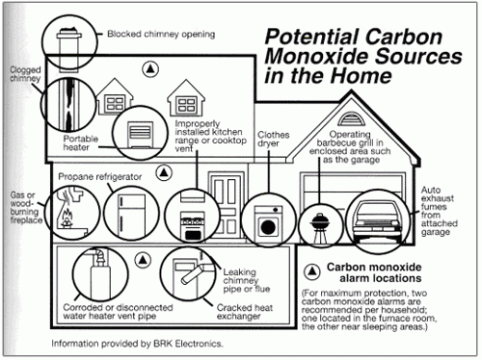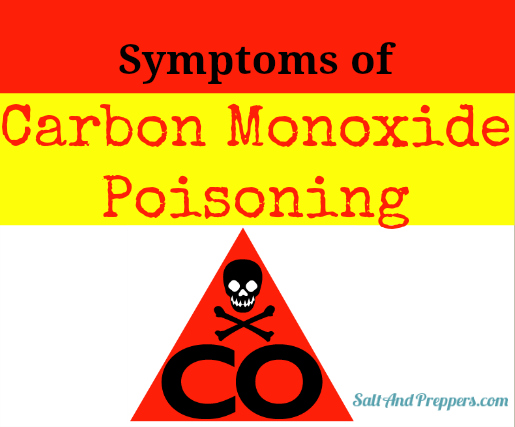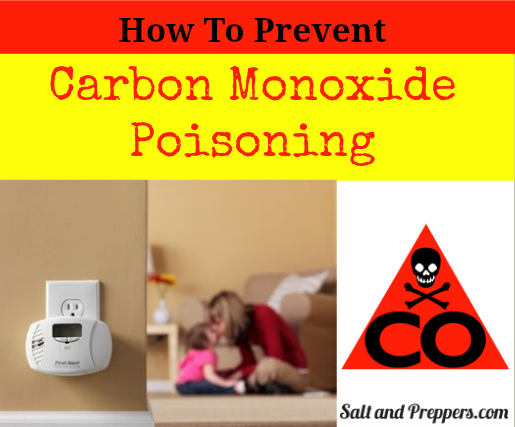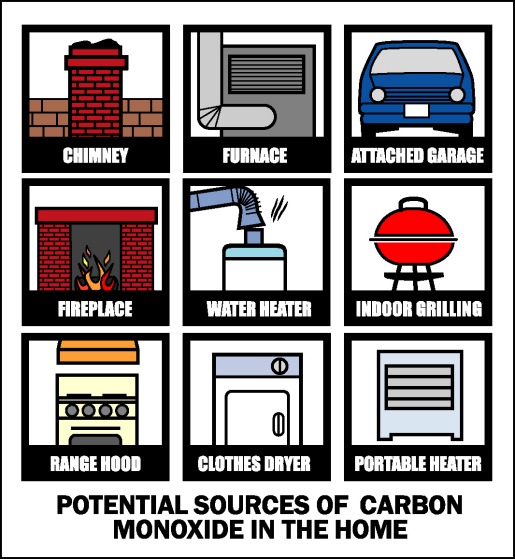100 Days of Preparedness Countdown: 95 Radon Detectors
Carbon Monoxide can be deadly. It is an odorless gas that is undetectable to human senses, but is easily detected by installing a carbon monoxide detector. Below you will find the information you need to prevent carbon monoxide poisoning.
Sources around the home. Carbon monoxide is produced when a fuel containing CARBON (oil, gas, wood, kerosene, coal, charcoal) is incompletely burned. Some sources around the home that you must keep in mind: automobiles parked in attached garages; room heaters (non-electric); fireplaces and stoves; kitchen ranges; outdoor cooking equipment like grills; oil or gas water heaters and dryers; kerosene lamps. Make sure this equipment is working properly and have your chimney and connector pipes checked regularly for cleanliness, soundness and for structural problems.
 PREVENTION is the key to your safety from CO poisoning
PREVENTION is the key to your safety from CO poisoning
*Make sure appliances are installed and working to manufacturer’s instructions and local building codes.
*Have only a qualified technician install or convert fuel-burning equipment from one type to another.
*Have heating system, chimney and flue inspected and cleaned by a qualified technician every year. Check to see the chimney has a proper draft controlled condition which will ensure a proper vent for flue gases.
*Make sure there is good ventilation at all times. Keep a window partially open both at home and in the car.
*Do not use ovens and gas ranges to heat your home.
*Do not burn charcoal inside a home, cabin, RV or camper.
*Do not operate gasoline-powered engines in confined areas such as garages or basements.
*Never leave your car or mower running in a closed garage.
*Make sure your furnace has adequate intake of outside air.
*Choose vented appliances whenever possible.
*Use kerosene space heaters and unvented gas heaters only in well ventilated rooms.
*Replace dirty air filters on your heating system.
*If you have a miss-match between a new high-efficiency furnace or water heater and old masonry chimney not designed for today’s standards, have the chimney repaired or improved with properly sized and insulated (if needed) chimney liner.
*The International Association of Fire Chiefs recommend a carbon monoxide detector on every floor of your home, including the basement. A detector should be located within 10 feet of each bedroom door and there should be one near or over any attached garage The above info was found at http://www.gascoals.com/Library/CarbonMonoxideSafety.aspx
 Early Symptoms of carbon monoxide poisoning are flu-like symptoms include:
Early Symptoms of carbon monoxide poisoning are flu-like symptoms include:
- fatigue
- weakness
- dizziness
- nausea
- headache
Advanced symptoms include:
- disorientation
- unconsciousness
- convulsions
- permanent brain damage
- mental and speech disorders
- hearing impairment
- coma
- death
Install a carbon monoxide detector/detectors in your home today if you haven’t already done so. Check the batteries if it is battery operated – and the detector itself. Detectors usually wear out in 5-7 years. Replace them with a “fuel-cell electro-chemical” sensor type and with a “peak” level memory to alert you to the highest level of CO present.



A person essentially help to make seriously articles I
would state. That is the first time I frequented your web page and
thus far? I surprised with the research you made to create this particular submit extraordinary.
Great process!